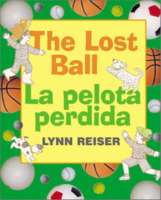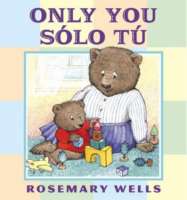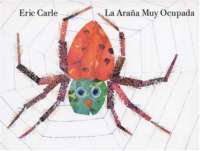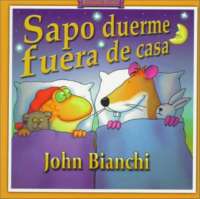
Susan Middleton Elya, whose first book, Say Hola to Spanish, was hailed in a starred Kirkus review as “innovative, useful and fun”, has taken her trademark seamless union of English and Spanish to new heights with this fun-filled, rhyming story. It’s a great day out for eight eager animals–ocho animales–who travel to the market to find their supper–including queso (cheese) for the mouse and hierba (grass) for the cow–and then dance the night away at the baile. Introducing Spanish words for numbers, foods, the names of animals, and other simple words and phrases, this book is perfect for non-Spanish speakers as well as Spanish-speakers learning English.
Lee Chapman’s bright and funny paintings, inspired by Mexican folk art, enhance the language and humor of this delightful story.










